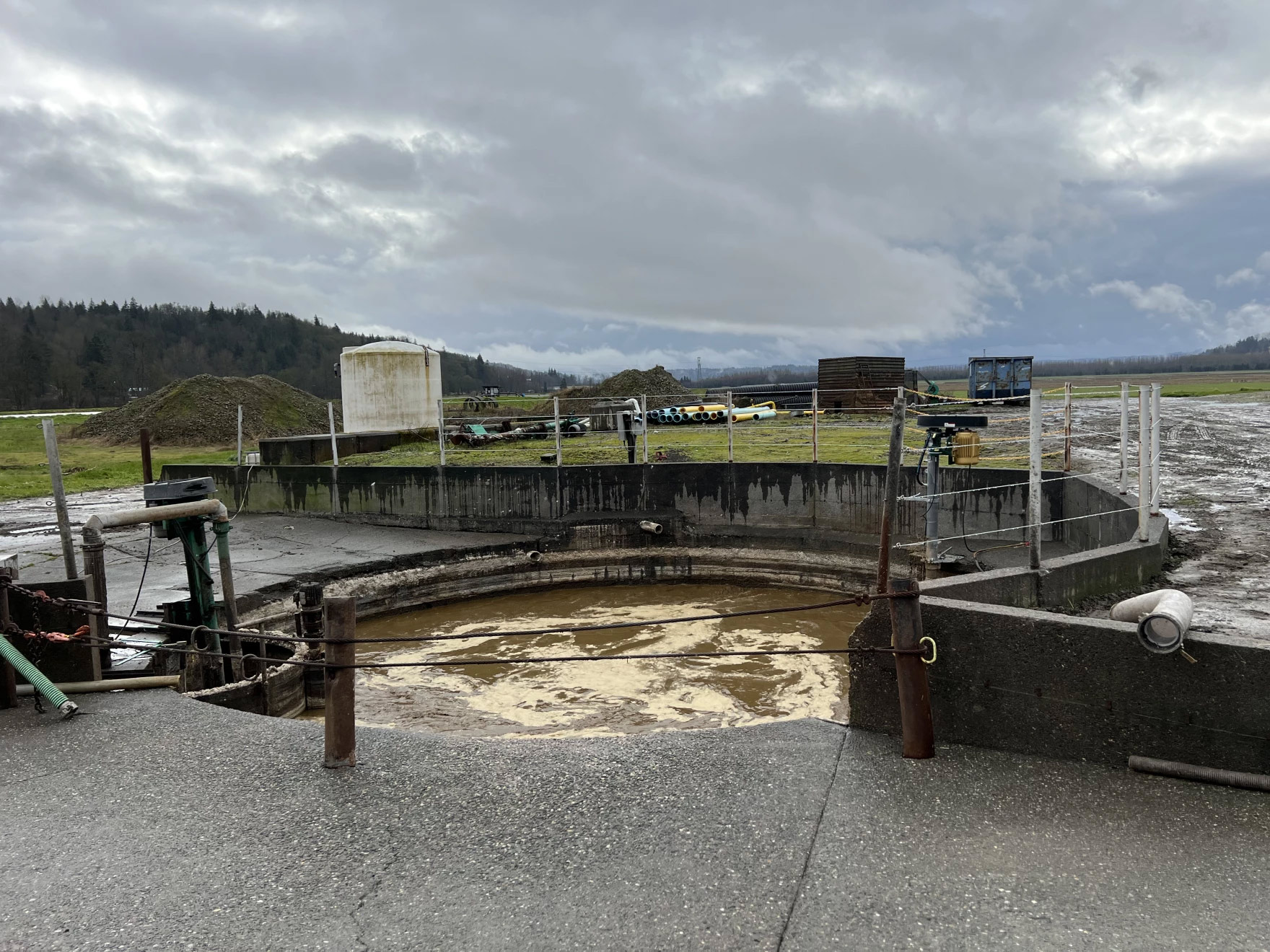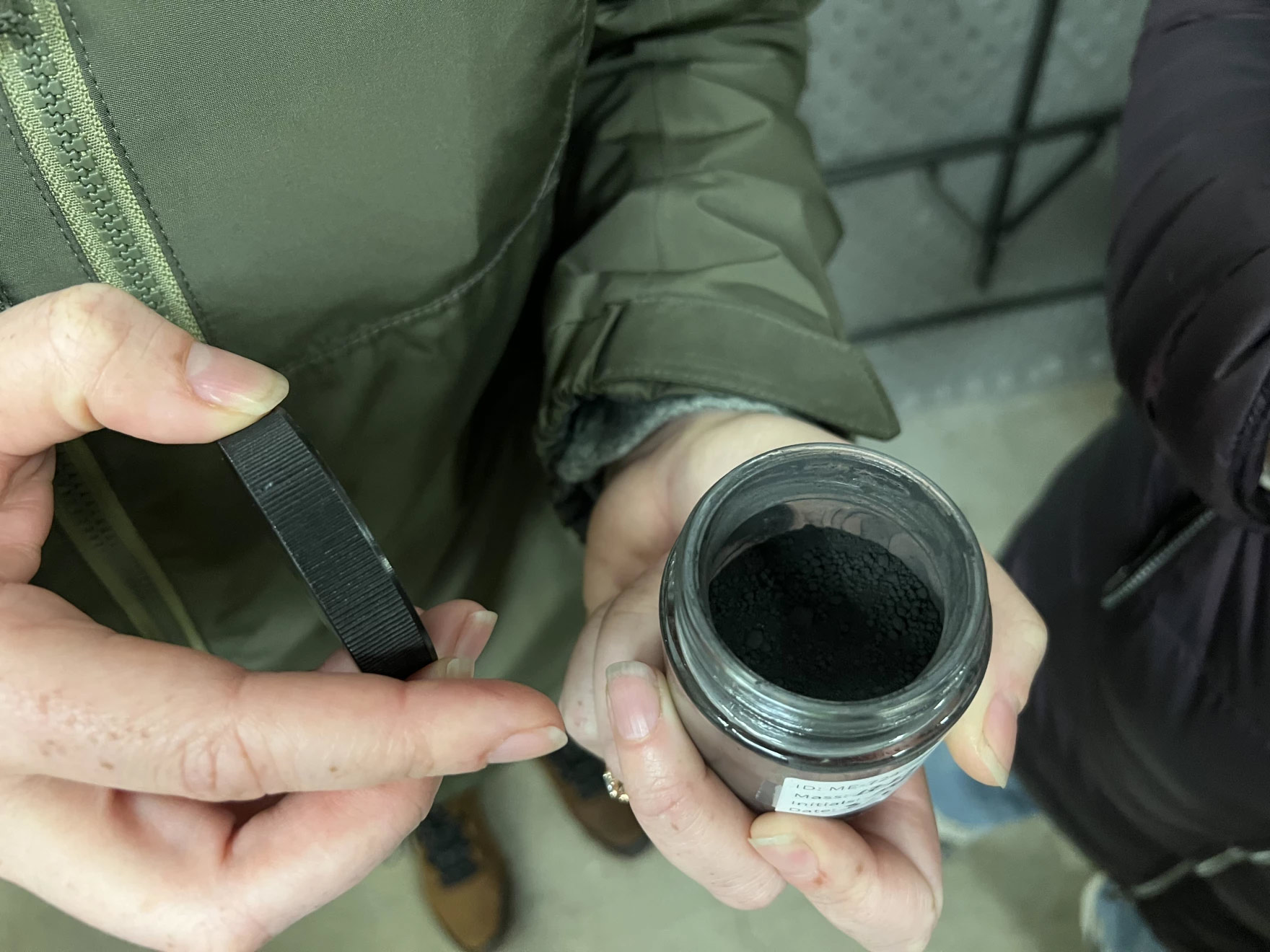 VIEW LARGER About 85,000 gallons a day of cow manure and food waste flow into the pit at Werkhoeven Dairy in Monroe, Washington. The digester captures methane that powers a generator, producing enough renewable energy for nearly 700 homes.
VIEW LARGER About 85,000 gallons a day of cow manure and food waste flow into the pit at Werkhoeven Dairy in Monroe, Washington. The digester captures methane that powers a generator, producing enough renewable energy for nearly 700 homes. Washington state is investing $22 million in dairy digesters, part of the 2023-2025 budget for the state's Climate Commitment Act. Based on a new report, they’re currently considered one of the most effective climate investments states can make.
Dairy digesters capture the methane that comes from cow manure and other organic waste as it decomposes and turn it into useful renewable energy.
The report, from the California Air Resources Board, showed that their dairy digester program was the most cost-effective carbon reduction initiative they have implemented. It used just over 2% of California’s climate investments while producing nearly 30% of the state’s greenhouse gas reduction.
However, a successful partnership between the Tulalip Tribes and a dairy farm in Monroe started long before Washington had a cap on carbon or revenue from the sale of carbon emissions permits to invest. It’s now a model for farms statewide that want to add digesters to lower their greenhouse gas emissions.
Tribal delegation touring successful low-carbon projects
At the Werkhoven Dairy in Monroe earlier this year, operator Jon Van Nieuwenhuyzen stood next to the big, cement-lined pool, full of that pungent brown liquid. He said about 85,000 gallons a day of manure and food waste get washed in there and warmed up to 100 degrees.
“What the digester is, essentially, is a cow's rumen…it’s just a large cow’s stomach,” Van Nieuwenhuyzen said.
He was giving a tour to a tribal delegation that’s studying Indigenous-led climate solutions. This project, Qualco Energy, started operating in 2008.
It's a collaboration between the dairy, the nearby Tulalip Tribes and since 2014, Snohomish County PUD. The utility pays Qualco Energy for the methane that’s captured in the digester to run a generator that provides renewable power for nearly 700 homes.
The process also produces high-quality liquid fertilizer for farmers that Qualco Energy can sell to offset its costs. In December, the partnership paid off the government bond that allowed them to build the digester, thanks to all the income the project has brought in.
Common ground in stewardship of the land
This joint effort started mainly as a way to keep manure from running off into the nearby Skykomish and Snoqualmie Rivers. Before the digester was in place, the farmers would spread it on their fields for up to 18 months, waiting for it to decompose. And it would often ruin habitat for endangered salmon, said Daryl Williams with the Tulalip Tribes.
“So it helps us keep nutrients out of our watershed and helps the farmers use their nutrients more efficiently,” Williams said. “Generating clean energy or renewable energy is just a byproduct for us.”
Historically, tribes and farmers in Washington often haven't gotten along. So the most important outcome of this partnership for them is the common ground they found — in stewardship of the land, Williams said.
Yet the value of its clean energy has raised the profile of the project. And it’s about to get even cleaner. Next year, Qualco Energy is getting technology for a pilot project that will convert their methane into pure hydrogen.
New tech will make this project even cleaner
Clean tech business mentor Mike Robinson, from the University of Washington, brought along a small jar of the carbon granules that will be left over from the process. He passed it around during the tour.
 VIEW LARGER Tour participants got a close look at a sample of the carbon that will soon be captured at the dairy digester. A Bothell, Wash.-based company called Modern Hydrogen will extract granulated carbon from methane to produce pure hydrogen.
VIEW LARGER Tour participants got a close look at a sample of the carbon that will soon be captured at the dairy digester. A Bothell, Wash.-based company called Modern Hydrogen will extract granulated carbon from methane to produce pure hydrogen. “So this technology lets them take that methane that's getting delivered to them and convert it to hydrogen so that they can burn the hydrogen and then collect the carbon instead of spewing it in the air,” Robinson said.
The only emissions from burning hydrogen is water vapor. It’s about the cleanest fuel out there. And methane is just about the dirtiest, before it’s burned. It’s more than 25 times more potent than carbon dioxide at trapping heat in the atmosphere, according to the Environmental Protection Agency.
The technology comes from Modern Hydrogen, previously known as Modern Electron. The Bothell, Wash.-based company is focused on reducing emissions from biogas, like what Qualco Energy produces from cow manure, within the existing gas infrastructure.
'Explosion of growth on the horizon'
Fawn Sharp, vice president of the Quinault Tribe and president of the National Congress of American Indians, came on the tour and told the group that momentum for these kinds of projects is only growing, nationally and internationally.
“And projects like this are going to be those that help educate others about what really works," Sharp said.
“It really works when communities come together. It really works when we marry traditional ecological knowledge and value systems with new and emerging technology.”
Tribes and other communities that are disproportionately affected by climate change are first in line for billions of dollars in state and federal funding that supports these kinds of solutions
“This is just the beginning,” Sharp said. “I can see an explosion of growth on our horizon.”


By submitting your comments, you hereby give AZPM the right to post your comments and potentially use them in any other form of media operated by this institution.